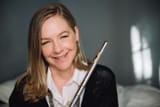Re-Making of Purcell’s Semi-Opera “The Fairy Queen”
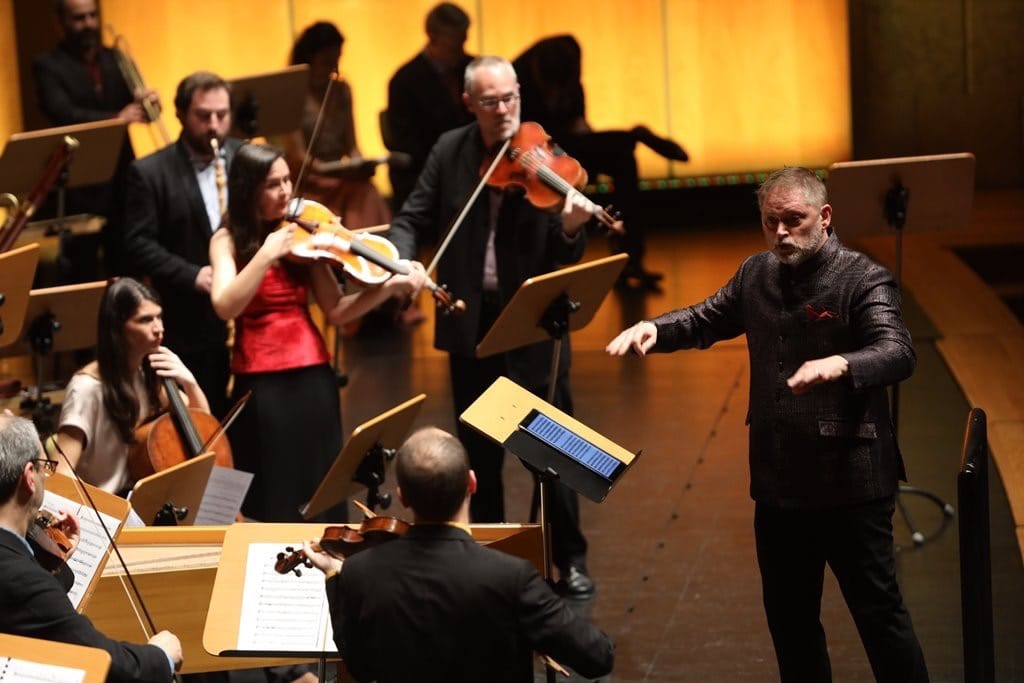
PRELUDE
On April 28th,, the last day of Portugal’s biggest, three-day music festival—Dias da Música (Music Days)—my dear colleague and friend António Carrilho, maestro and virtuoso recorder soloist, will lead his early-music ensemble La Paix du Parnasse in a staged version of Henry Purcell’s 1692 “semi-opera” The Fairy Queen. This will be a highlight of the festival, as it will take place at the Centro Cultural de Belém (CCB—Cultural Centre of Belém), in the largest auditorium, and feature five solo singers of international renown. The Fairy Queen, based around Shakespeare’s play A Midsummer Night’s Dream, is solidly fixed in the operatic canon, despite being composed over 300 years ago.
Serenade readers surely will be curious about how such a performance is prepared by the conductor, who in this case has also adapted the music for a music-only performance, to fit into the structure of this long-running and highly regarded Festival. Also of interest are the incredible quintet of soloists, and the period-instruments involved and how they are used to maximum advantage in Carrilho’s brilliant adaptation.
INTERVIEW WITH ANTÓNIO CARRILHO
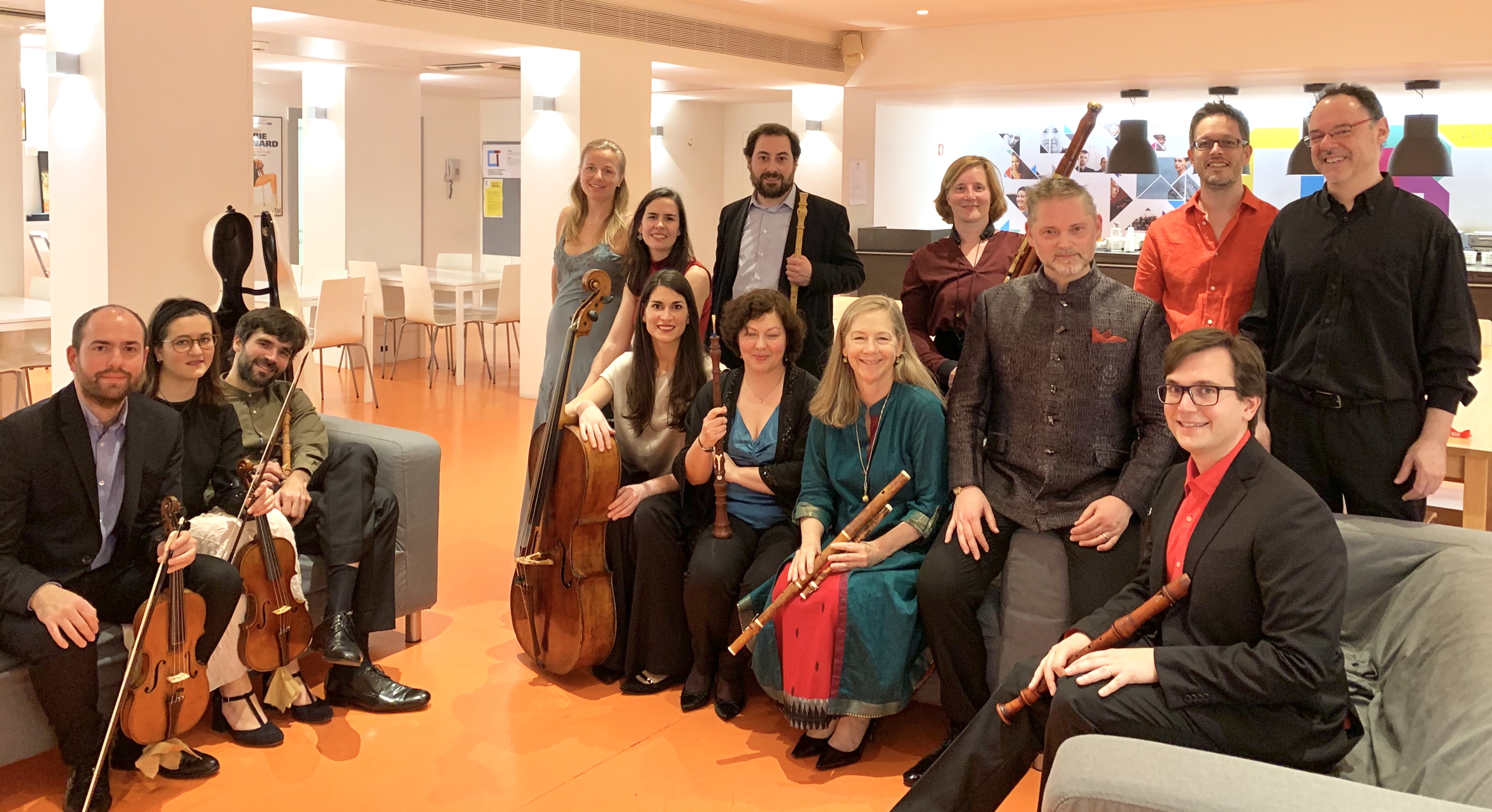
Katharine Rawdon: António, you are a well-known recorder virtuoso who performs regularly all over the globe, but how did this invitation to conduct Purcell’s The Fairy Queen about?
António Carrilho: Actually, I have conducted some projects before at the CCB, with my Spanish-based early-music ensemble La Paix du Parnasse, including Bach’s The Art of the Fugue, which was a huge success, and after that I got the chance to conduct at the Festival, last year, doing a whole program devoted to…the devil! This was because the theme of the Festival last year was the supernatural, and I chose the devil as a theme. The title of the program was 666, The House of the Devil, and this was also a huge success, so I was invited this year to conduct The Fairy Queen by Purcell, which is based on Shakespeare’s Midsummer Night’s Dream.
KR: Can you tell us what pieces were on the 666 program, it sounds rather fun!
AC: It was very fun! We started with a Symphony by Wilhelm Friedemann Bach, which is not specifically about the devil, but contains many diminished chords which include the tritone (interval of the diminished fifth) which was known at that time as the diabolus in musica—“the devil in music”, because it was basically a forbidden interval. Next we performed the Danse des Furies from Orfeo ed Euridice by Gluck, and a Concerto originally for flute which I transcribed for recorder by Giovanni Battista Ferrandini, which, like the W. F. Bach work emphasises the tritone. With a smaller formation, I also performed my transcription of Tartini’s famous Violin Sonata called The Devil’s Trill, which was great fun, because I had to use some extended techniques in order to reproduce the double trills and extended lines of the original score. To finish, we performed Boccherini’s Symphony The House of the Devil, which incorporates a version of the Gluck Furies, and is a beautiful Symphony, and finally, the Terramoto (Earthquake) movement from Haydn’s Last Seven Words of Christ on the Cross.
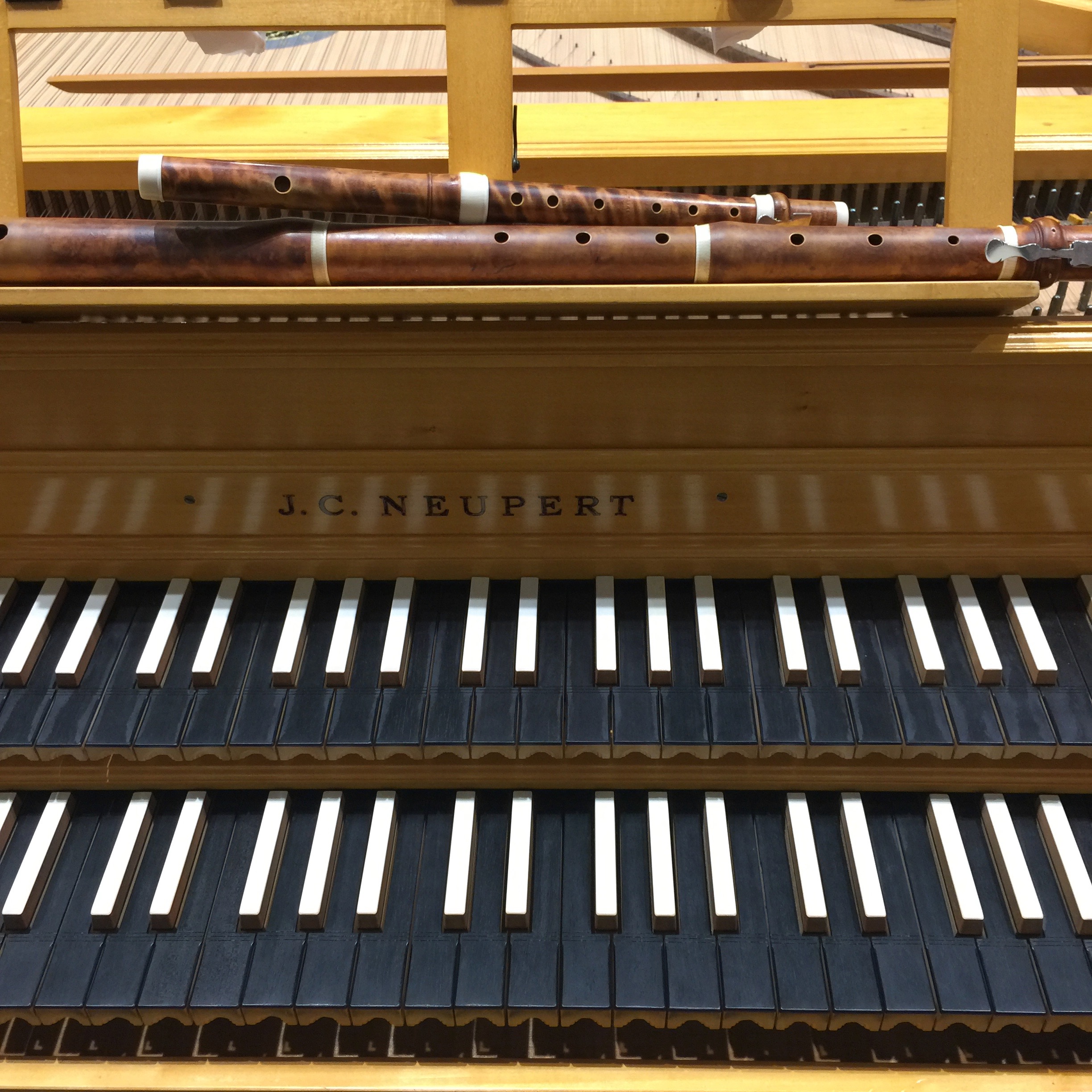
KR: Haydn’s Terremoto movement has an added meaning for those of us living in Lisbon, since the Earthquake would have referred to Lisbon’s devastating earthquake of 1755, with Haydn’s work written 21 years later.
Now, adding conductor to your musical skill-set—is that a radical new undertaking or is it a natural extension of your performing career?
AC: Well, I was asked to conduct for the first time about 15 years ago, and I had never actually thought about conducting, even though very often, when I would be playing in an orchestra, I would be thinking well, I would do this in a different way. I guess because I had more ideas, I would think of different ways something could be done, to add this or that. In the beginning I would actually suggest these ideas to the conductors, and then I would get a very bad face (both laugh), so then I decided to just keep my mouth shut! And when I got my first invitation to conduct, it was actually to perform Dido and Aeneas by Purcell, so that was my very first conducting experience. Ever since, I just love it, and I intend to keep pursuing it.
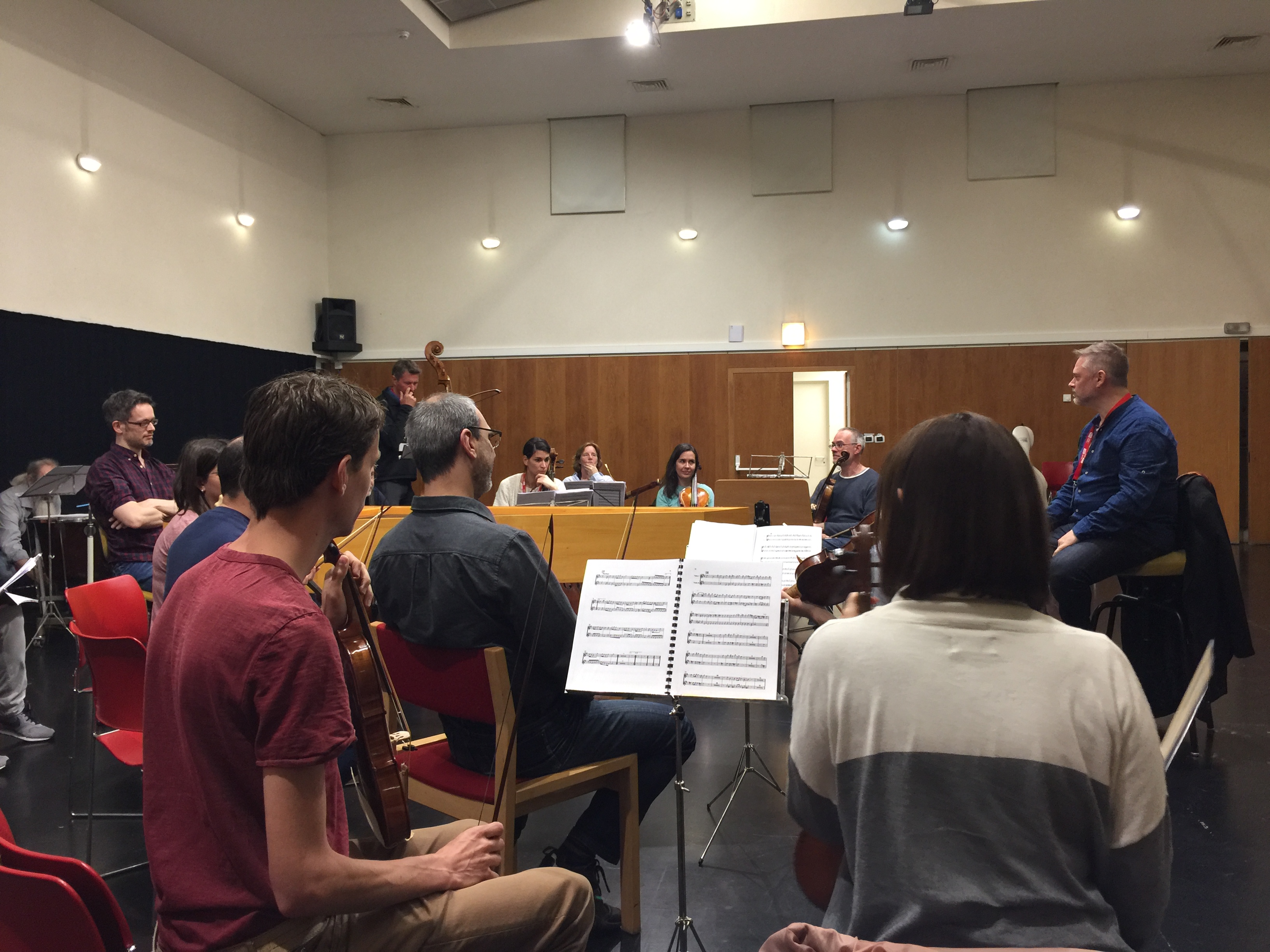
KR: So it seems to me that before you began to conduct, you already had a latent conductor inside you.
AC: At least I had some ideas, which very often conductors lack. Often people are concerned with technique and the gesture, but they lack ideas about phrasing, being creative, being together with the musicians. Looking pretty on stage is not the best way of conducting, I would say.
KR: It must have been very exciting to receive an invitation from the most important music festival in Portugal to conduct this work. The structure of the “Dias da Música” Festival at the CCB is that of a panoply of short concerts—let’s say a musical thali—at affordable prices, to encourage people to explore many performances, spending a day or two or even three immersed in music. What do you find important about the Festival?
AC: The fact that people can afford to come and listen to these concerts allows them to see that musicians are actually human! We’re just doing our job, and in my experience, regardless of being sick or having problems, you just have to go on stage and perform your best. As an example of that, when my father died, I had a concert the very next day, and it was an amazing concert, I really played well, even though I was dying inside. And that is the life of a musician. So I think that when people can come and see musicians live, they can relate to them much better, as humans, as equals. When you see musicians on YouTube or listen to CDs it is actually often recordings and splicings you are hearing, so it is not really the same feeling. I think for musicians to be in direct contact with the audience is also the best experience, because you are communicating your own way of perceiving and interpreting music and bringing that directly to people.
KR: In other words, the music is no longer “disembodied”…
AC: No, not at all!
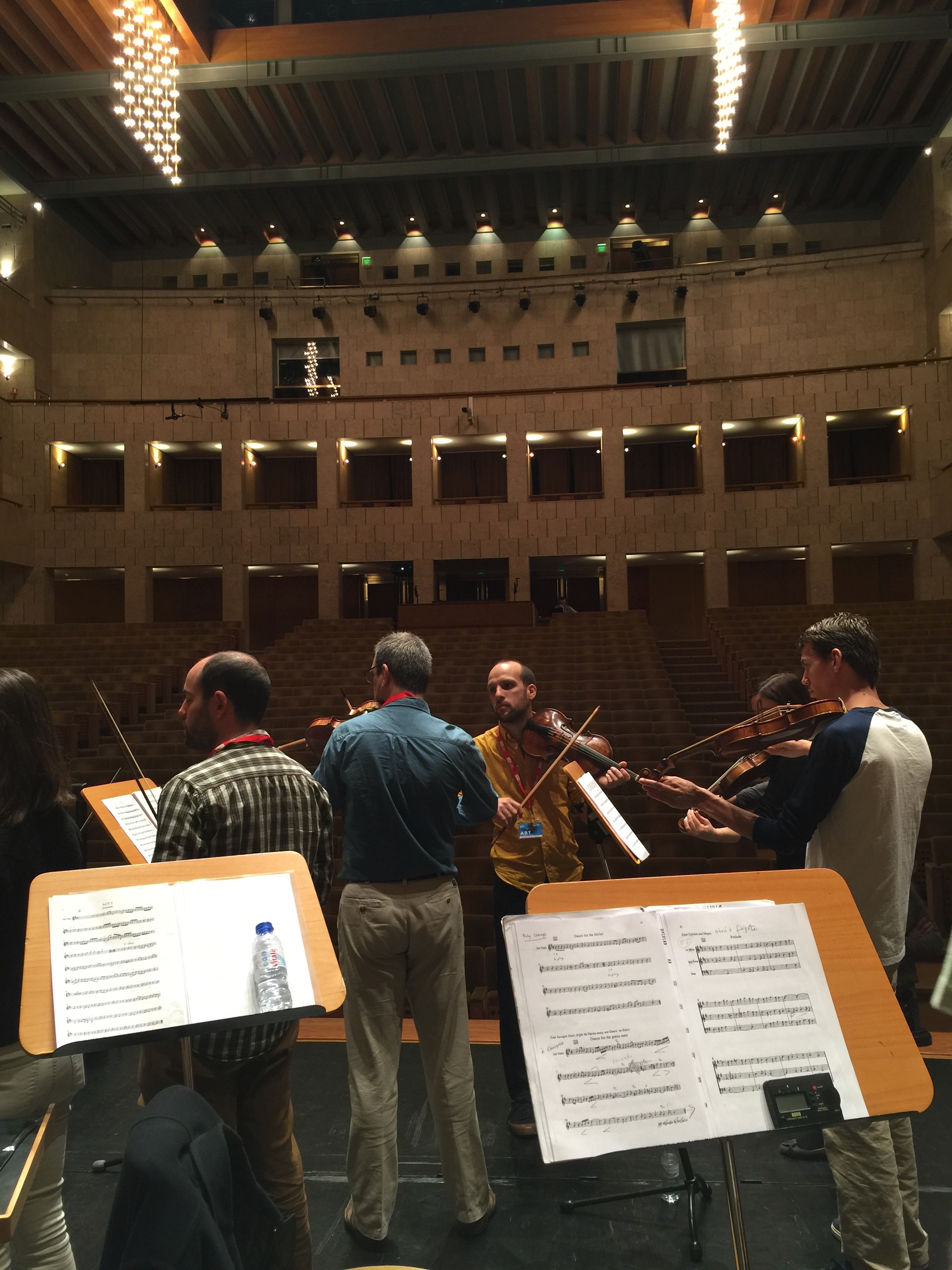
KR: It’s the musician in the same hall as the audience; and these concerts are generally in an intimate space, notwithstanding that this Purcell opera will be performed in the largest hall.
AC: Yes, and I’m so glad that I’ve just learned that the orchestra seats are practically sold out, more than two weeks in advance, and that makes me very happy!
KR: What elements of this opera project are the most interesting or exciting for you?
AC: Well, this opera is about a supernatural world, about fairies and nymphs, and kings and queens, and so this is related to Medieval ideas and legends.
KR: So the element of fantasy and the “out-of-the-ordinariness” appeals to you?
AC: Yes, very much.
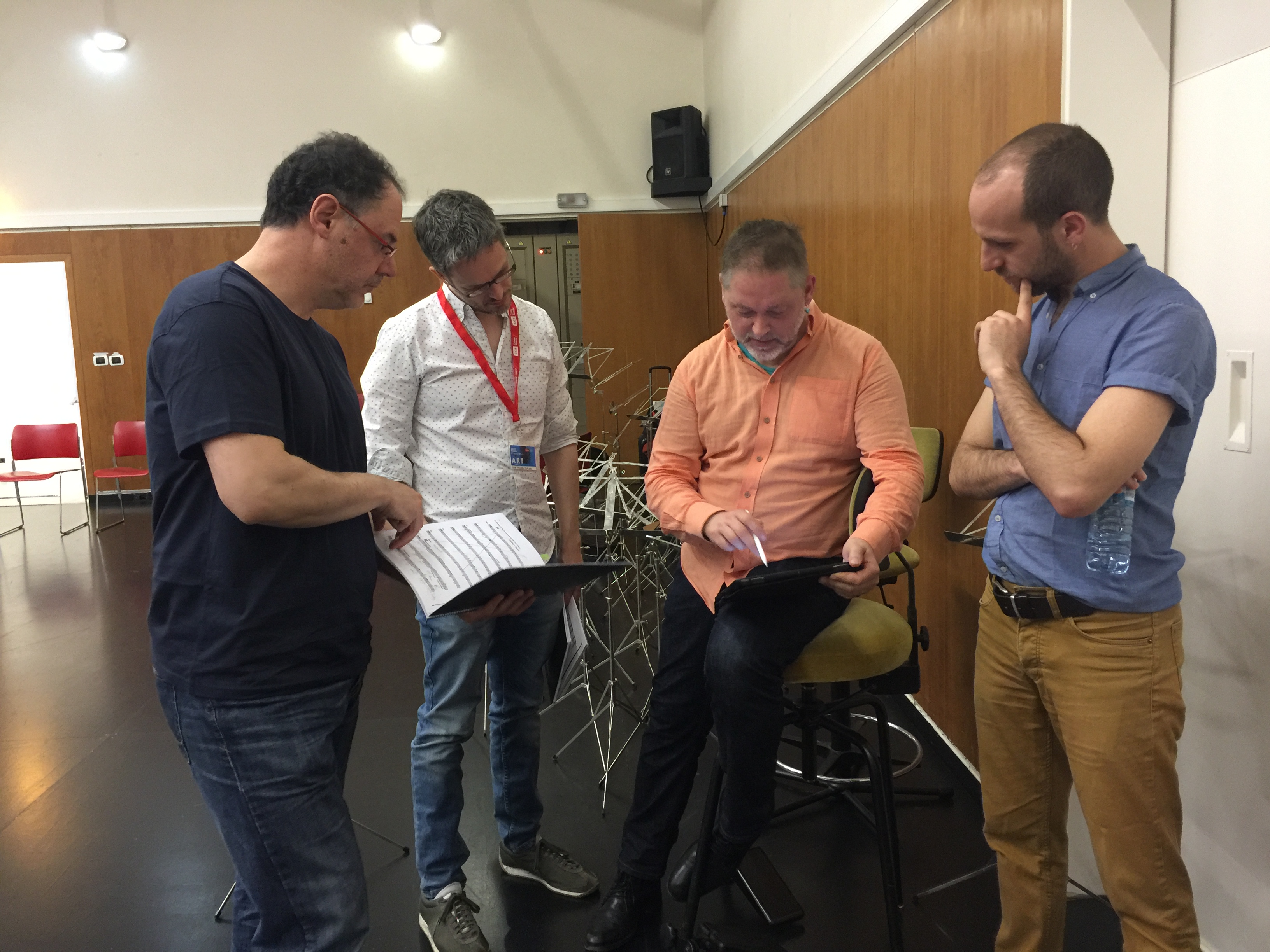
KR: And that contrasts with many recent operas which are centred in the “real world”; I am thinking of Puccini and verismo opera, and forward from there…
AC: Yes, this is an “anti-verismo” opera. It was conceived as solo musical moments to fit into the staging of the Shakespeare play. So the original form is quite long, being the actual theatre play plus Purcell’s music as well. Purcell just wrote the music around the play, in order to color the text of Shakespeare. The actors playing Oberon and Titania, the principal characters, are spoken roles, with singers “doubling” them in the arias by Purcell.
It is also interesting that Purcell made many alterations to the music, adding songs to The Fairy Queen for different productions. Our performance will be as close to the final version as possible, with only about one hour and ten minutes of the music of Purcell, and none of the spoken play of Shakespeare. This is only because, in this Festival, the concerts have a maximum duration of just over 60 minutes, in order to permit the public to attend many concerts each day.
Along with songs, there will be some purely orchestral movements, which would have been performed during set changes—in the year of this opera, 1692, there would have been no modern machinery for rapid stage changes, of course. Also, some of the instrumental parts have been left off as well, unfortunately, due to time constraints. And without the actors, some of the plot line will be lost, but there is no other solution. Ideally the dialogue would link together the story, with arias or chorus elaborating on the story line. Well, this time we cannot have everything, but I would like to do the complete opera some time, perhaps even in Bombay—that would be fantastic!
KR: How does Purcell’s The Fairy Queen fit in to the history of opera, where Monteverdi’s L’Orfeo (1607) is often considered the first example of the genre? Would Purcell have been familiar with Monteverdi’s work, or other operas?
AC: Hmm, that is a tricky question. Monteverdi being Italian and an early composer, I don’t know if there would have been any connection between Venice, where Monteverdi was, and Purcell’s London. There were printing houses in London, but I have not come across references to access there to the Italian tradition. Also The Fairy Queen was written some 85 years after L’Orfeo, so musically they are different, with the English style being so different from the first Italian Baroque style of the early 17th century.
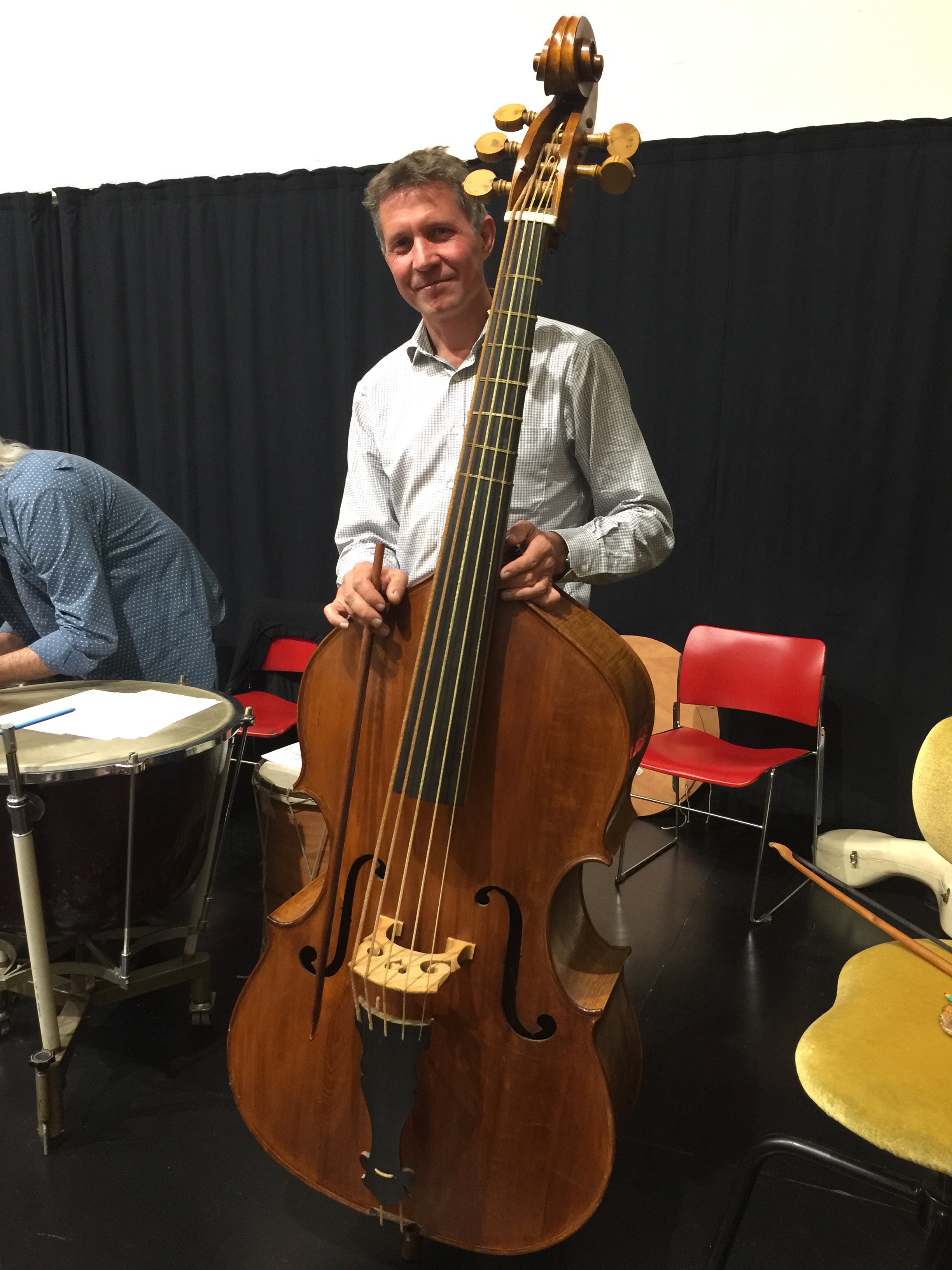
KR: Purcell is, above all else, always referred to as a very English composer, generally considered a rare English composer among the very greats, with a gap of some centuries before the appearance of other English composers of equally high stature such as Elgar, Britten, and Vaughan Williams in the late 19th and 20th Century. I’m interested, then, in asking you as a performer and conductor, what is it exactly that makes Purcell sound so English? Because he most certainly does, and I can’t put my thumb quite on the reason.
AC: I think the fact that The Fairy Queen is based on a Shakespeare text is by itself already enough. And Purcell is trying to put into music what the poetry of Shakespeare brings in, and that inspires him, too. Also Shakespeare has been required reading in school and university for such a long time; it would be the equivalent to Luís Vaz de Camões in Portuguese.
KR: In my research, I found an interesting, if not 100% reliable fact, that Shakespeare is the best-selling author of all time in the English language, with over four billion books sold!
AC: Wow! But I don’t think he was that rich…
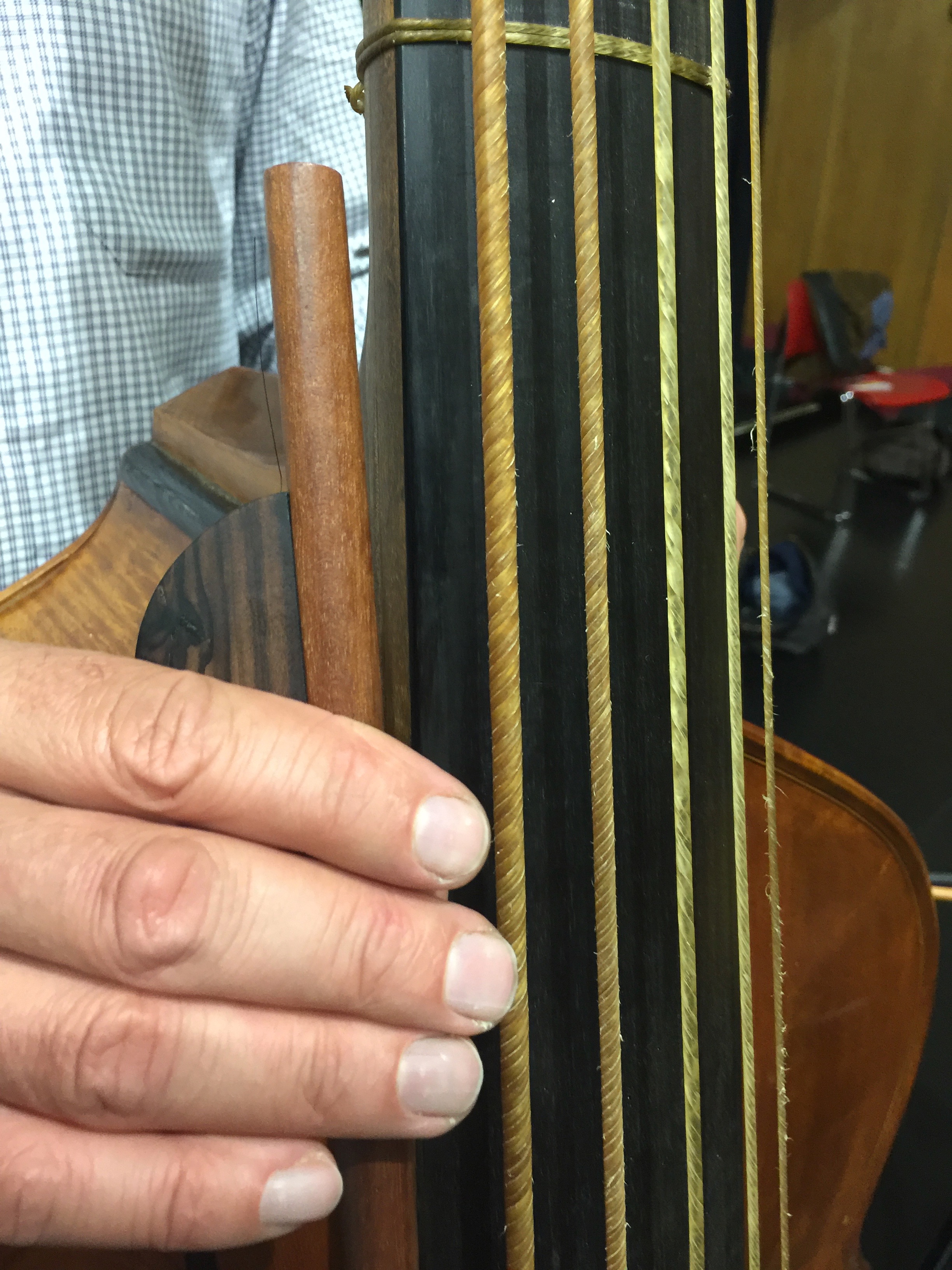
KR: No, I don’t think he made as much money as one might these days…but in general I would say that his works are considered unparalleled in the English language, for their beauty and also their inventiveness and playfulness with the language.
AC: It’s funny because the very first scene in the opera is the scene of the drunken poet! In our version, I will try to go one step further, since the character is being pinched and poked by numerous fairies: after the majestic Overture, I would like the first ten or fifteen seconds of the orchestral introduction to be just full of glissandi and out-of-tune playing, in order to depict his drunkenness.
KR: So there will be a huge dramatic shift, straight off at the beginning of the work?
AC: Yes, because that reflects what actually happens in the context of the opera. This is also a sort of reproach to many scholarly conductors I have met in the past, who would NOT consider pulling such a trick, everything would just have to sound “pretty”.
KR: And everything sounding pretty actually gets…pretty boring after a while!
AC: Yes, the tension of the dissonance (non-“pretty”) is resolved by the consonance, like ups and downs —or more correctly, the downs and ups in life.
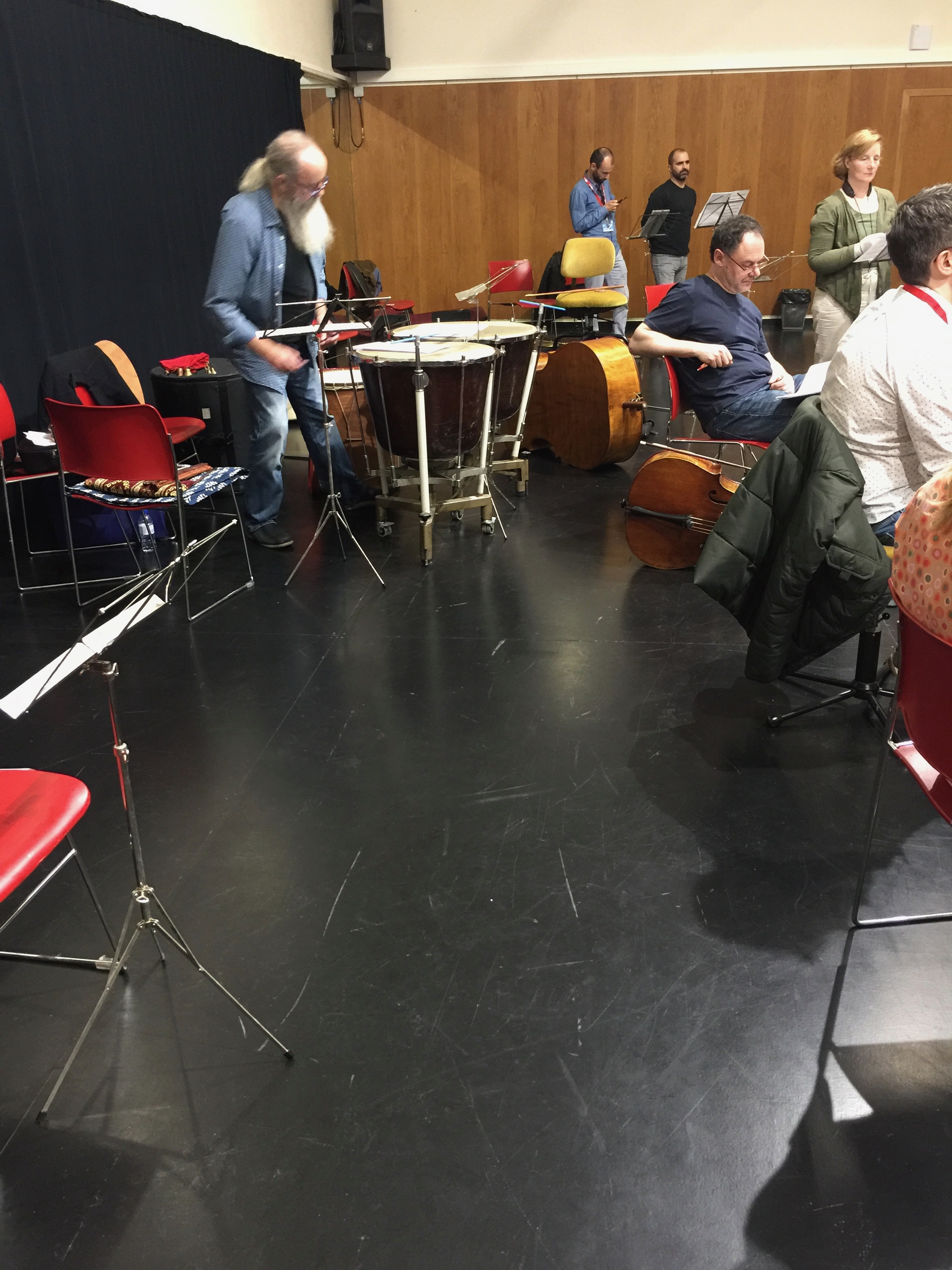
KR: How does this opera compare to Purcell’s other great hit Dido and Aeneas? Is there something in The Fairy Queen that compares to the incredibly powerful aria “Dido’s Lament”?
AC: Yes, of course, you have The Plaint of the 5th Act, also about the loss of a husband. It starts with the same kind of ostinato bass.
KR: This kind of bass line is very typical of the period, yet these by Purcell are extraordinary, no?
AC: They are just amazing. The text of thisPlaint” is “Oh, let me weep…he is gone and I shall see him no more”. The accompaniment between verses is just a violin, oboe or flute, but it is very powerful. For this performance I decided to be creative and have added strings and also four other soloists to function like a chorus in a Greek tragedy, giving comments on the main text.
KR: I’m looking forward to that! I can imagine that some purists might think that this is scandalous, to rearrange music of Purcell, but the truth is that in that period composers rearranged their works all the time, according to the situation and personnel at hand, correct?
AC: Yes, and you know, if you have a great continuo (harpsichord) player, which will be the case in this performance, he or she will be also improvising to some extent their part, as commentary (Greek chorus again) on the songs and action in the play. Within the style, the continuo player has quite a bit of freedom, by tradition.
And in our version, we will have the vocal soloists singing the choir parts, because these parts are like in a Greek tragedy, as I mentioned before; they comment on the action, and make the scene whole.
KR: So like that, you have a choir…without having a choir.
AC: Yes, I have found a way to make this possible.
KR: António, can you tell us about the marvellous singers for this production?
AC: Well, the Director of the Festival, André Cunha Leal, requested Ana Quintans (soprano) for the production, which I considered to be a fabulous surprise, as she is a rising star on the international scene, having sung all over Europe and is receiving the best of critiques from the international press.
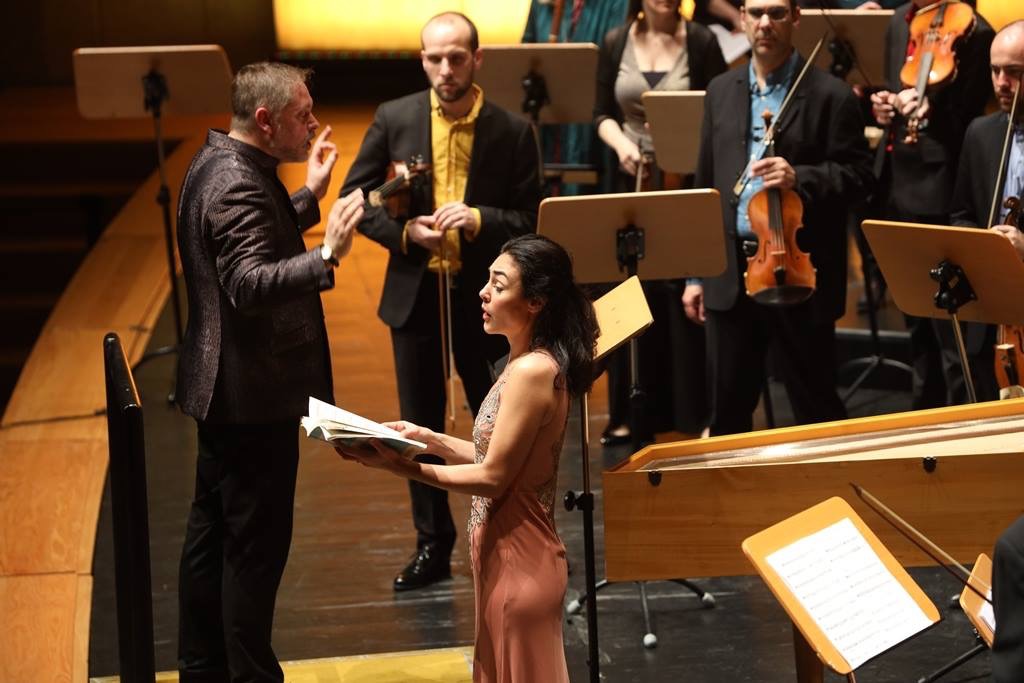
KR: And she is Portuguese, yes?
AC: Yes. I already have worked with her in concerts where I was playing recorder, but now for the first time I will be conducting her. She assembled a group of singers who are also fabulous, with whom I will be delighted to work. They are singers with international careers, working with the best modern orchestras—Concertgebouw Orchestra in Amsterdam or the Berlin Philharmonic—as well as early-music groups such as Les Musiciens du Louvre or Les Arts Florissants, you name it. They are the crème de la crème, so to speak.
So alongside Ana Quintans, I am very happy that we will have Claire Debono (soprano), who is well-known for singing Purcell operas, and Marcel Beekman (tenor), who is a specialist in both early and contemporary music, who has been premiering works all over the world with the best ensembles. There will also be a very young Portuguese baritone, who is receiving excellent critiques, André Henriques. Two years ago I heard him singing Beethoven’s 9th Symphony, which is a very difficult part, just beautifully. This is very unusual for a young singer. And there will be the Italian countertenor, Carlo Vìstoli, also very young and already singing demanding counter-tenor roles with important early-music ensembles and at top festivals.
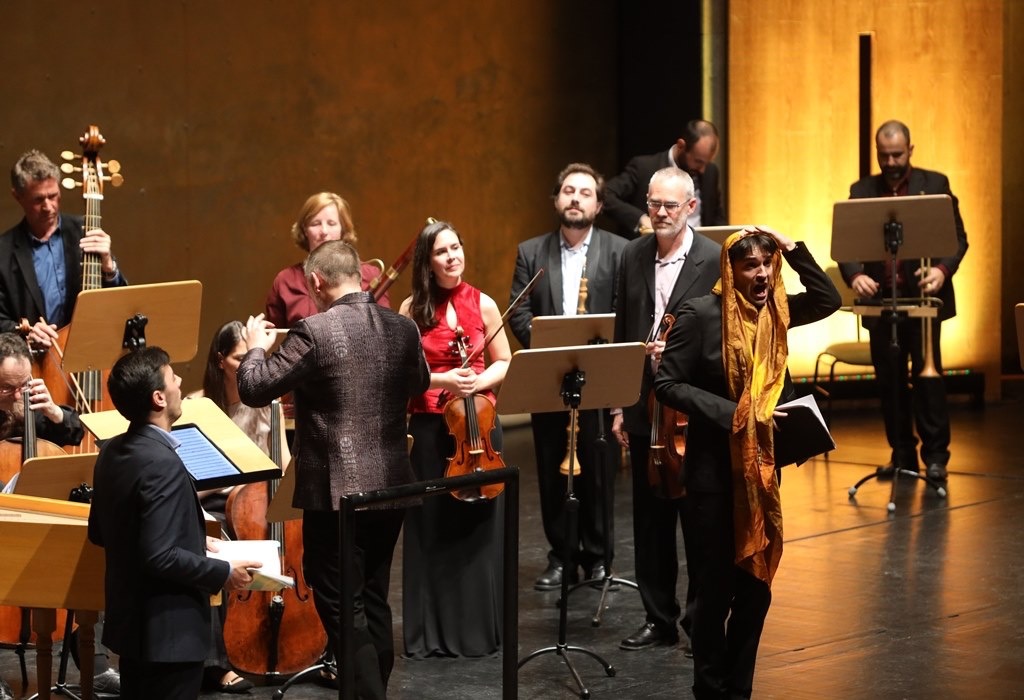
KR: And can you tell us more about your ensemble La Paix du Parnasse? How long has it been in existence, what are the instruments, and who are the musicians? What are your goals for the ensemble?
AC: La Paix du Parnasse (The Peace of Parnassus) exists since 2007. It was formed with a viola da gamba colleague with whom I had studied in Holland, and a harpsichordist who had just arrived from Lyon, France, who received his 1ere Prix in Continuo, meaning early 17th Century Music. I came together with them when I was requested at the last minute to replace someone in a concert in Madrid. By the time we had rehearsed in Salamanca and traveled to Madrid, it was like magic. In one afternoon we managed to have two recital programs ready, and from that moment on, we decided to keep playing together. We started as a trio, but we have performed with singers as well, and then with strings, orchestra and winds, and now for the first time, we are doing an opera together in Lisbon. There will be thirty instrumentalists on stage.
For the future, I would like to develop more symphonic aspects; I love to work creatively with the shaping of instrumental colours. With the voice you already have the colour, but with instruments you have to suggest, and to aim for the cantabile of the voice—this is a challenge. I would like to go from very early music into Haydn and Mozart, also Handel operas, cantatas and oratorios. It is just beautiful music. Also Hasse. The late-baroque period; also Bach cantatas, Passions and the B Minor Mass.
KR: Ok, I’m going to leave you now and go practice! Because I really want to play all that music, too!
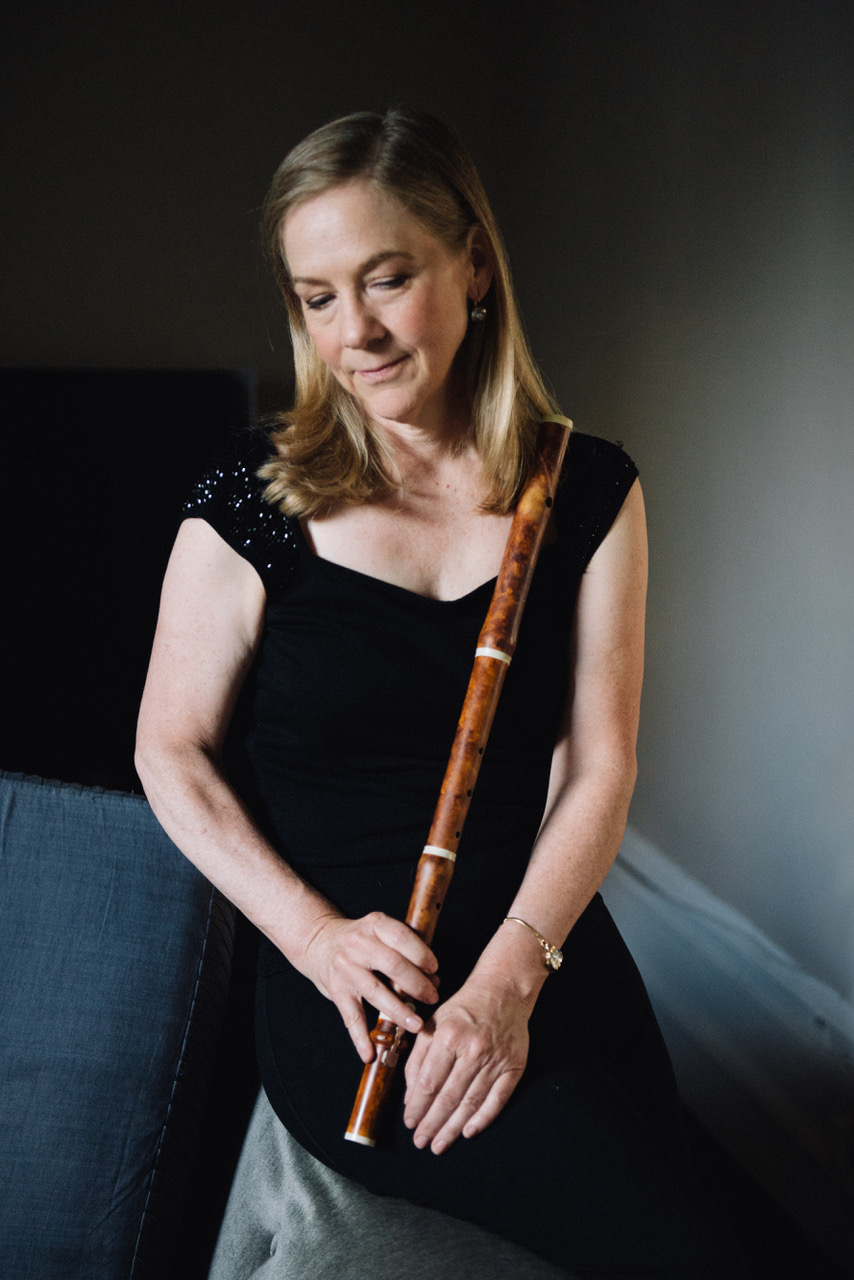
So, António, although this production of The Fairy Queen has some parameters that we discussed, it seems to me that, counter-intuitively, this plays into your hand as what I would call a “colourist”; that is, a musician who has a feverish imagination for timbre and texture—hence your interest in playing music from the 15th through to the 21st century on many different recorders, and combining with unusual instruments, such as piano and transverse flutes in our ensemble Syrinx : XXII. In short, the challenges of this production has given you a chance to flex your muscles in approaching the score creatively, choosing carefully which passages, arias, and instruments to include in order to maximize the dramatic effect. Is this correct? In a way, has it been fun to personalize the production, to re-create it, make it your own?
AC: Absolutely, it has been huge fun to conceive this production: it is my vision of an immensely famous 17th Century composer. Normally, period ensembles tend to play the music just as it was written, even though the continuo part should have more fantasy and effects of colour-changing, more elaboration and variation.
What I’ve done in this piece is to start from the text, and from the text I get ideas, and from those ideas I “colour”; I do like an early 20th Century master (not calling myself a master!) —using Klangfarbenmelodie [color-melody as used by Schoenberg and Webern] — and that is just because I listen to all kinds of music and I get lots of ideas. So I do this by combining different instruments, and colours, and, for example, asking the total opposite of what would be normal, for instance asking the trumpet, who is always playing loudly and majestically, to play softly, or to combine it with a flute or with a lute—and that should be possible with these good musicians. It is good to try everything, because you can mix it up in such a way that you get a new instrument, effectively.
Also from my experience as a recorder, playing new music, such as the Concerto by Nuno da Rocha that I premiered in September, I could see the way this new composer was using the instruments in new ways, such as winds blowing through the instrument making only “wind” sounds. I am also working with my chamber music students on Schoenberg’s Transfigured Night, and the way in which Schoenberg writes the music going from one instrument to the other, that just gives me so many ideas, it is a blessing. For instance in the aria Oh, Let me Weep, I won’t be using trumpets—only now that gives me an idea!—they could use their hand to mute and do a glissando, as if they are suffering so much they can’t speak any more…
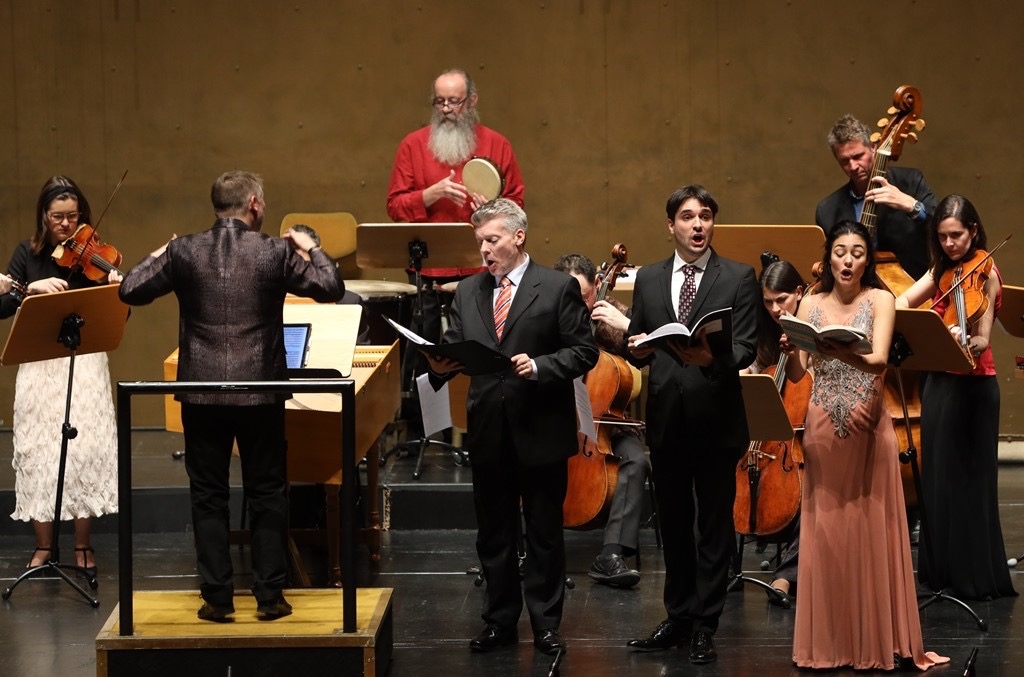
KR: Let’s say you are “de-strangulating” early music from the strictures of orthodoxy, to get at a deeper expressive meaning of the music.
AC: People tend to say that in the treatises it was written X, Y, or Z, but you know, I can mention the case of the Portuguese language: in the space of five years, there have been so many changes. So when you talk about the 17th Century, the actual meaning of words are different from nowadays. So very often when you say, you should do this or that, it has a different meaning; language specialists will agree with me.
For example, in the early 16th Century music, there are two types of tonguing techniques, lingua cruda and lingua morbida; cruda is very harsh, and morbida is very soft. If you are literal, you will never do the cruda, because it sounds nasty, but it just means a very clear articulation. Especially with reproductions of original instruments, it is necessary to sharpen the intentions, the inflections, because these instruments don’t have the same range as modern instruments, so you have to put more effort into it. Why ignore all the information we have now in the 21st Century, just following a book, when in fact it doesn’t necessarily sound well?
Also, you often have books from similar schools and they say to do opposite techniques! The bottom line is, as Quantz and others have written, to use “good taste”, and that depends on the musical context, the hall and many other factors.
With instruments you can actually put words in the sound; you have to find your own text, idea, or image. That’s why I think working with instrumental ensembles can be such a poetic thing. You can colour the music, make inflections, and make the inner voices heard—I want a lot of viola players! It is the voice of the mother; you can’t just have the children (violins) squeaking above, you need some support from below, and that is colouring as well. It’s like being a scientist: I just have to find the right molecules to get the chemistry right.
KR: And how do the violins like this?
AC: (both laughing). Well, I am always careful to choose very strong players for the inner voices, second violin and viola, because it is lower—they must be physically strong. In general I like to shape things in a pyramid, with lots of low voices, fewer middle voices, and the least on top.
KR: What other operas hold a special interest for you; which would be on your “shortlist” of operas to conduct?
AC: Aside from Handel, definitely Rameau. For me, he is the first “orchestra man”: he knows how to orchestrate and use the sound, going from one instrument to the other, which is the line I try to follow. These French operas are amazing; many of them are based on Greek tragedies, which is common to most baroque operas. Rameau is just so sophisticated: the strings are often divided into five parts, rather than the typical four, plus two or even three viola parts, and two bass parts, so a full spectrum. Then in the winds you will have oboes, recorders and flutes or both, plus bassoon—solo and not just the continuo—to make a very rich bass part. Also you would have one or two harpsichords, theorbo, and/or organ. In our version of The Fairy Queen, we use the combination of flute (baroque flute) and recorder, which is unusual. Like this the sounds are distinguished but also complement each other in the harmonics of their sounds. I also wanted to have the Mozart-like idea of a serenata, a group of winds, so the orchestra will have two oboes, plus the taille, which is a lower oboe that plays together with the violas. And in some moments only the winds will play. Other times they will mix with the strings, weaving in and out of the texture in shifting solos or pairs to help sustain interest and, again, colour the music in a special way.
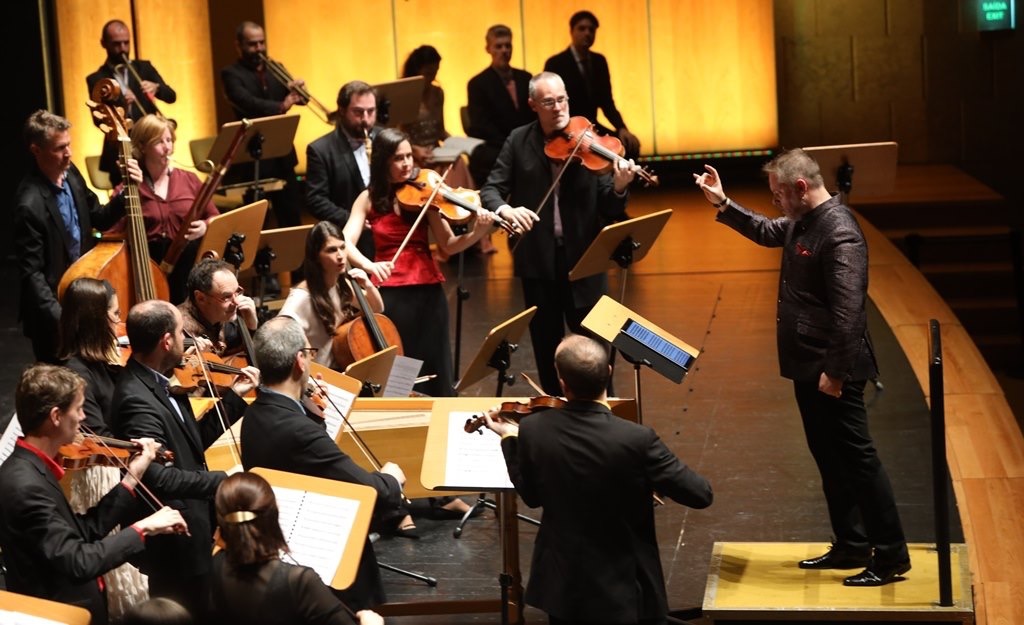
KR: Having just seen the CCB’s promotional video for The Fairy Queen, in which you address the camera so naturally, I cannot resist asking if you had also considered working in TV as a commentator or personality who could bring classical music to a wider public? Surely this is a critical issue for our art right now…
AC: Well (laughs), it was the first time I did that, and I had a lot of fun. I was very nervous but I prepared myself well, wanting to sound natural, because I think if you want to reach an audience, and you want to bring that audience to you, to share your vision and your ensemble with an audience, you have to be able to communicate with people, just like in music performance. The promotional video was so much fun and I was just telling the story very quickly, in 40 seconds.
KR: You didn’t look one bit nervous, I might add…
AC: I did the whole thing in ten minutes, repeating a few times, and just being myself. I was smiling and having fun because that is me. I’ve never thought of being on TV and promoting music in that way, but hey—well, it was fun. If people think I can bring something to them, I just want to have the best of times doing it, for sure.
KR: OK, we’ll pass that information along! One last hypothetical question: if you were to do a full production of The Fairy Queen, and there were no limits of any kind, what would be your dream staging, scenery, costumes and so forth? In your imagination, how would you like to present this opera?
AC: Well, I love nature, and there would have to be nature in this production. Anyway, most of the scenes occur in the forest, so there would be trees, dawn, whisperings, moonlight reflecting on the water; there would be all these forest things. I don’t think I would use animals, because it would not be good for them to be onstage, they would be frightened, but I would have suggestions of animals, perhaps with projections. The woods could also be suggested with projections—without destroying trees for scenery—as well as using scenery made by live drawing, and there would be dancers as well. The orchestra would be onstage, not in the pit, and everyone would be dressed up in costumes. Someone could be dressed as a stone—why not? That is also part of nature!
KR: I hope that one day soon, you will be able to direct such a production, and many others as well. And I hope I am always there, performing at your side! Thank you, Maestro Carrilho!
POSTLUDE
During the entire concert, it was clear that the audience was following and enjoying every moment of the music, the theatrics of the singers—as in the “drunken” first appearance of André Henriques, and the “drunken prelude” of the orchestra, which clearly surprised and delighted the crowd. There were super-titles above the stage to increase comprehension, though any English-speaker would have been awestruck, as I was, by the impeccable English diction of every singer—none of whom is a native English speaker! Later duos and solos featured welcome theatrics by the singers, even pushing themselves onto the conductor’s podium; in all, the spoken parts of the semi-opera, I dare say, were not missed at all! The adaptations of the orchestration made by Carrilho truly added genuine interest and subtlety to the performance, with the percussionist sowing magical sounds throughout the concert—a stroke of genius to be included. All this helped project the sound of the period instruments into a very large, modern hall.
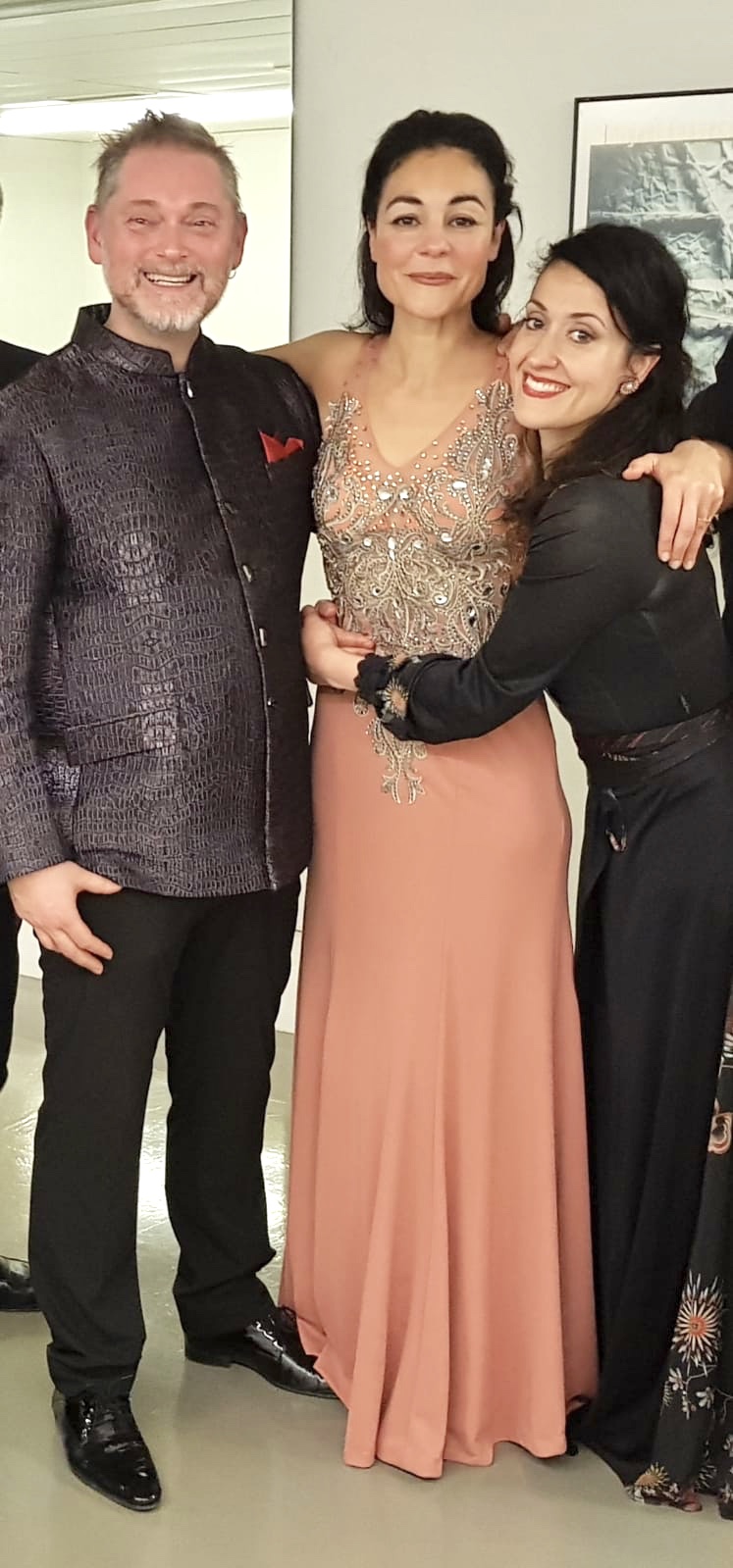
The final chords were followed by an immediate standing ovation from the large audience. The singers were brought back to the stage for bows three times, along with Maestro Carrilho, while the audience whistled and screamed. It was more akin to a rock-concert finale than the polite ending of an opera from three centuries ago. Along with the singers, Carrilho brought to center stage for solo bows the wonderfully elegant concertmaster, Emmanuel Resche-Caserta, the brilliant harpsichordist Diego Fernández Rodríguez, and the legendary percussionist long associated with Jordi Savall, Pedro Estevan.
Indeed, following the success of The Fairy Queen, aside from brilliant critiques, Carrilho has already been invited to conduct in a festival of religious music in Portugal next year, and to conduct The Fairy Queen in Malta in 2022. Furthermore, negotiations are open for Carrilho to conduct Rameau’s opera Platée at the CCB in Lisbon in the 2022-23 season.
Henry Purcell, himself long ago departed, was certainly present in spirit at every moment of this unique performance, through music of such delightfully varied character. Flowing effortlessly from elegance to wit to profundity to bawdiness, it is clear why Purcell has been considered a master composer through to our day, and, I suspect, will be far into the future. Bravo, Maestro Carrilho, for your brilliant conception and realisation; may there be many, many more.

